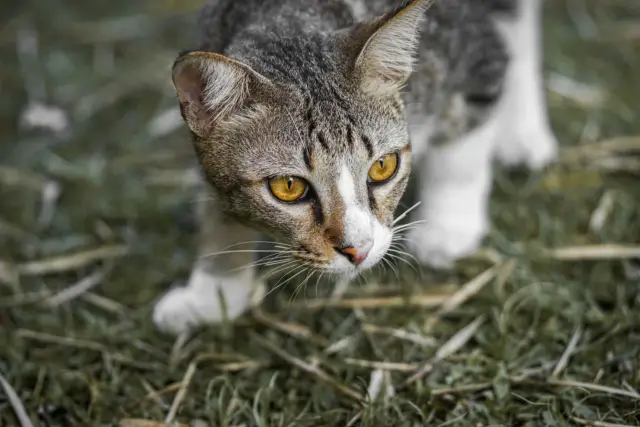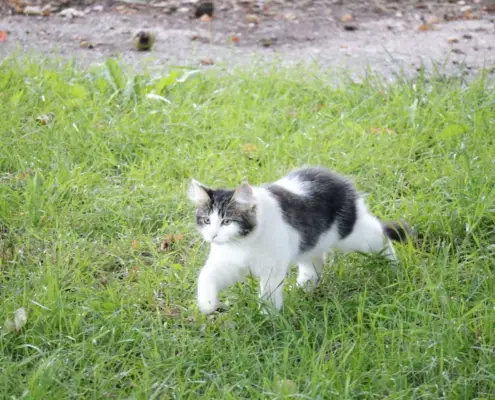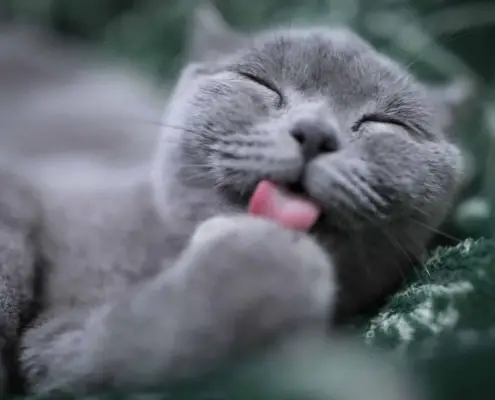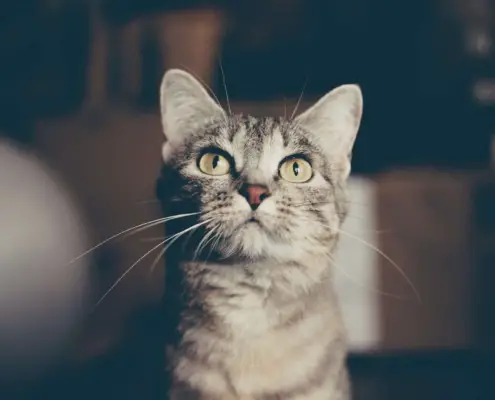
Cats are fascinating creatures, known for their grace, agility, and their innate ability to hunt. Whether they are prowling in the wild or lounging in our homes, cats possess a strong instinctual drive to engage in predatory behavior. Understanding the intricacies of cats’ predatory behavior can provide us with deeper insights into their natural instincts and help us create a more enriched environment for our feline companions.
The Evolution of Cats as Hunters
The predatory behavior of cats is deeply rooted in their evolutionary history. Cats belong to the family Felidae, which includes both wild and domesticated species. Throughout the millennia, cats have developed and perfected their hunting techniques to ensure their survival. From the ancestral wildcats to the modern-day domestic cat, their predatory instincts have remained largely unchanged.
In the wild, cats depend on hunting to procure their food. Their hunting behavior is finely tuned to capture and kill their prey effectively. Cats have evolved several physical adaptations that aid in their hunting prowess, such as sharp retractable claws, keen senses, and a flexible spine that allows them to pounce and maneuver swiftly. These adaptations, honed over generations, enable cats to excel as skilled predators.
Understanding the Instincts Behind Predatory Behavior
To comprehend cats’ predatory behavior, it is essential to delve into the underlying instincts that drive their actions. Cats are obligate carnivores, meaning their bodies are biologically designed to consume a diet primarily composed of meat. This evolutionary adaptation has shaped their predatory instincts and behaviors.
The key instinct behind cats’ predatory behavior is their natural drive to hunt, capture, and kill prey. This instinct is hardwired into their genetic makeup and is triggered by various stimuli, such as movement, sound, and scent. When a cat detects potential prey, their predatory sequence is initiated, consisting of stalking, chasing, pouncing, and finally capturing and killing the prey.
Key Elements of Cats’ Hunting Techniques
Cats employ a range of hunting techniques that contribute to their remarkable success as predators. One key element of their hunting technique is their ability to stalk their prey stealthily. Cats have an exceptional sense of hearing and can pinpoint the location of their prey accurately. They use their keen eyesight to focus on their target and move silently, minimizing any chances of detection.
Once the prey is within striking distance, cats unleash their lightning-fast speed and agility. They use their hind limbs to propel themselves forward, executing a powerful pounce that propels them towards their prey. Their sharp retractable claws are then deployed to grab hold of the prey, while their powerful jaws deliver a swift and lethal bite.
The Role of Play in Developing Predatory Skills
Play serves a crucial role in the development of a cat’s predatory skills. Kittens, from a very young age, engage in various forms of play that mimic hunting behaviors. These playful activities help them practice their hunting techniques and refine their motor skills.
Through play, kittens learn crucial lessons about coordination, balance, stalking, and pouncing. They engage in mock battles with their littermates, honing their hunting instincts in a safe and controlled environment. Play also serves as a means of social bonding, strengthening the familial ties between kittens and their mother.
Factors That Influence Cats’ Hunting Behavior
Several factors contribute to the variability in cats’ hunting behavior, both in the wild and domestic settings. One significant factor is the availability of prey. In areas with abundant prey populations, cats may exhibit more frequent hunting behaviors. Conversely, in environments where prey is scarce, cats may reduce their hunting activities or expand their hunting range.
Another factor that influences cats’ hunting behavior is their individual personality and temperament. Some cats may have a stronger drive to hunt and display more intense predatory behaviors compared to others. Factors such as age, health, and previous hunting experiences can also influence a cat’s hunting behavior.
Signs of Predatory Behavior in Domestic Cats
Even our beloved domestic cats exhibit signs of predatory behavior, albeit in a modified form. It is essential for cat owners to recognize these behaviors to understand their feline companions better. One common sign of predatory behavior is stalking and pouncing on toys or small objects. Cats may exhibit a crouched posture, dilated pupils, and intense focus as they prepare to pounce.
Other signs of predatory behavior include chasing moving objects, pouncing on insects, and engaging in interactive play with their owners. These behaviors are not only a manifestation of their natural instincts but also serve as a means of mental and physical stimulation for indoor cats.
Managing and Redirecting Predatory Behavior
Managing and redirecting cats’ predatory behavior is crucial to ensure their well-being and prevent any potential harm. Providing appropriate outlets for their hunting instincts is essential. Interactive play sessions using toys that mimic prey can help satisfy their hunting drive. Engaging in play sessions with your cat and providing opportunities for them to stalk, chase, and pounce on toys can be incredibly enriching.
Creating an enriching environment that includes scratching posts, climbing structures, and puzzle feeders can also help redirect their predatory behavior. These activities engage their natural instincts and provide mental and physical stimulation. Additionally, regular exercise and playtime can help alleviate excess energy and reduce the likelihood of destructive behavior.
Case Studies: Famous Cat Predators in the Wild
The world is home to several famous cat predators that showcase the magnificence of their predatory behavior. The African lion, often referred to as the “king of the jungle,” is an apex predator known for its formidable hunting skills. With their strength and cooperative hunting techniques, lions can take down large prey, providing for their pride.
Another remarkable predator is the elusive snow leopard, inhabiting the rugged terrains of Central Asia. These solitary cats are highly adapted to their harsh environment and are known for their stealth and agility. Their ability to blend seamlessly into their surroundings allows them to surprise their prey and ensure a successful hunt.
Appreciating and Supporting Cats’ Natural Instincts
Understanding and appreciating cats’ predatory behavior is crucial for pet owners and wildlife enthusiasts alike. Cats’ hunting instincts are an integral part of their nature and should be respected and nurtured. By providing appropriate outlets for their predatory behavior, we can create a stimulating and fulfilling environment for our feline companions.
Through interactive play, environmental enrichment, and responsible management, we can support cats’ natural instincts while ensuring their safety and well-being. By embracing and cherishing their predatory instincts, we can deepen our connection with these remarkable creatures and foster a harmonious coexistence.
Encourage your cat’s natural instincts by providing interactive toys and engaging in play sessions. Create an enriching environment with scratching posts, climbing structures, and puzzle feeders to keep them mentally and physically stimulated. By understanding and supporting their predatory behavior, you can enhance the overall well-being of your feline companion.
If you enjoyed my article, I would appreciate you sharing it with your network.

Sima Ndlebe
Sima writes for CatBuzz. He is interested in Cats, Health and Fitness, and Entrepreneurship.
Published: 31 October 2023



